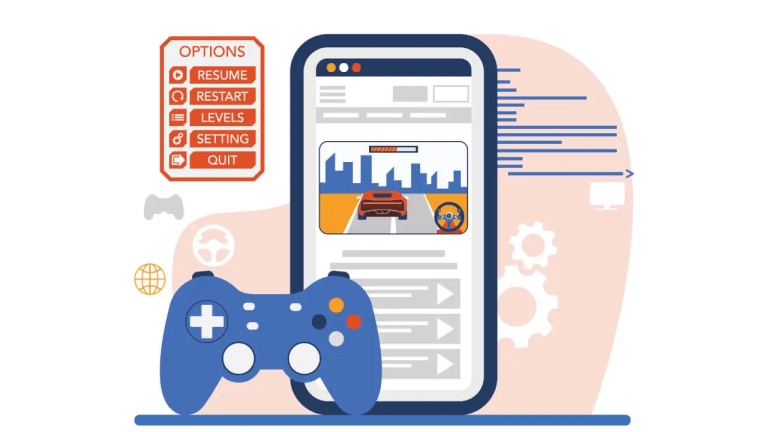Table of Contents
ToggleIntroduction
Manual testing needs help with rapid-release cycles. It is slow and tedious, limiting comprehensive regression testing. Test coverage relies on human judgment, allowing flaws to slip through. Also, manual tests drain tester time as they are repeatedly executed without amplifying validation.
Therefore, engineering teams need to adopt advanced testing technologies to confidently deploy code changes that boost tester efficiency and enable quick confirmation of each modification.
This article explores five game-changing platforms that enable the continuous delivery of innovative software without compromising stability or velocity.
1. Test Automation and Autonomous Testing
A game-changing, leading software testing advancement is autonomous testing driven by AI. Manual test creation must work in sync with the development part; hence, the coverage will always be scarce. This type of autonomous testing uses certain algorithms that can base quality testing on its own, which may not be done by humans otherwise.
Furthermore, intelligent autonomous testing adapts itself by concentrating only on some high-risk areas and new functions. In contrast, AI can take up repetitive parts throughout this testing life cycle and save human testers.
In the wake of such autonomous testing solutions, technology leaders can help increase QA velocity to align with release speeds while maintaining quality. Testing becomes a part of quick, frictionless DevOps along with Continuous Delivery. AI-based solutions have critical advantages in quickly releasing innovation and assuring its reliability.

2. Next-Gen Testing
Revolutionary Next-Generation testing leverages artificial intelligence to an extraordinarily transformed software level of validation. Such kinds of AI have brought us conversational AI, predictive analytics, computer vision, and other smart applications that now need to be put through their testing paces with traditional effort. This is where next-gen AI testing comes in.
Therefore, Effective machine learning enables one to discover test-run anomalies that automatically show new product regressions or defects. AI finds the bugs that are difficult to discover by human testers through analysis of the logs, performance metrics, network traffic, and test results.
Natural language processing is also used for parsing application logs, user transcripts, and documentation, which is essential for fast-tracking individual incident impact, common cause root, and resolution speedup.
This means that the strategy of next-gen testing keeps changing following any modifications in applications, risk profiles, and the previous results of tests. In other words, the next-gen testing mimics the intuition of an expert tester, optimizing test resources towards high-value areas.
This enables technology leaders to ensure quality for the latest innovations around software powered by AI/ML in a next-generation testing model. Intelligent automation and its amplification of testing empower engineers so that they can release cutting-edge applications confidently. AI test augmentation will become critical for validating modern systems infused with intelligence.

3. Non-Functional Testing
Generally, functional testing is the one that authenticates correctness, while non-functional testing checks all the rest. The non-functional testing addresses important quality concerns like security, reliability, and performance. Besides, non-functional testing is also rigorous and enables the production of robust software.
Non-functional testing, based on the set of techniques of load, stress, and volume, will all simulate huge usages in the actual world. It will uncover bottlenecks, slowdowns, and points of instability. That gives the assurance that a system will work flawlessly in live operation.
In addition, security testing tools enable scans, penetration tests, and attack simulators that reveal problems before they can be exploited – thus protecting customers and their data.
Likewise, reliability testing exposes systems to adversities such as failures, starvation, and crashes. This can guarantee resilience and fault tolerance.
Besides, robust non-functional testing infuses confidence for deployments with responsive performance characteristics, maximum uptime, and hardened security. This focus guarantees that these attributes continue to improve and be scaled in the speedy innovation of new solutions.

4. Product and Packaged Application Testing
For companies developing software products and packaged applications, comprehensively testing the end-user experience is critical. Product testing validates seamless installation, configuration, upgrades, customization, localization, and cross-platform compatibility.
By automating product testing from an end-user perspective, teams can catch real-world quality issues missed by component unit testing. Testing the integrated product like a user boosts reliability and satisfaction.
Further, start techniques like leveraging intelligent test automation across the product lifecycle amplify validation. Testing across implementation layers validates robustness.
End-to-end testing of packaged suites confirms all modules integrate correctly and customized configurations function as expected. This builds trust.
So, with rigorous product testing automation, defects can be caught early before impacting customers. Comprehensive validation of desktop and mobile applications, embedded software, and product suites accelerates release cycles by preventing late-stage issues. End-user testing assures smooth deployments.

5. API Testing and Service Virtualization
Furthermore, robust API testing and service virtualization are critical for teams building interconnected microservices and distributed architectures. API testing validates services that follow specifications, handle edge cases, integrate as expected, and maintain performance SLAs under load. This confirms reliability.
Also, service virtualization simulates mock endpoints, databases, and microservices for independent testing without waiting on shared environments. This enables early integration testing.
Additionally, automation frameworks significantly reduce manual API testing effort while testing through the lifecycle from development to production.
Thus, teams can accelerate the delivery of complex, distributed applications with API testing and service virtualization. Rapid validation provides confidence to release faster. These solutions empower leaders to deliver innovative products at the rapid pace of modern software markets.
Final Thoughts
By leveraging test automation, applying next-gen techniques, emphasizing non-functional tests, validating end-to-end UIs, and testing APIs effectively, development teams can accelerate release velocity without sacrificing quality. Adopting these cutting-edge testing strategies enables confident delivery of high-performing, secure, and resilient software. With robust testing capabilities, forward-thinking organizations are poised to delight customers and out-innovate competitors through faster software delivery.




